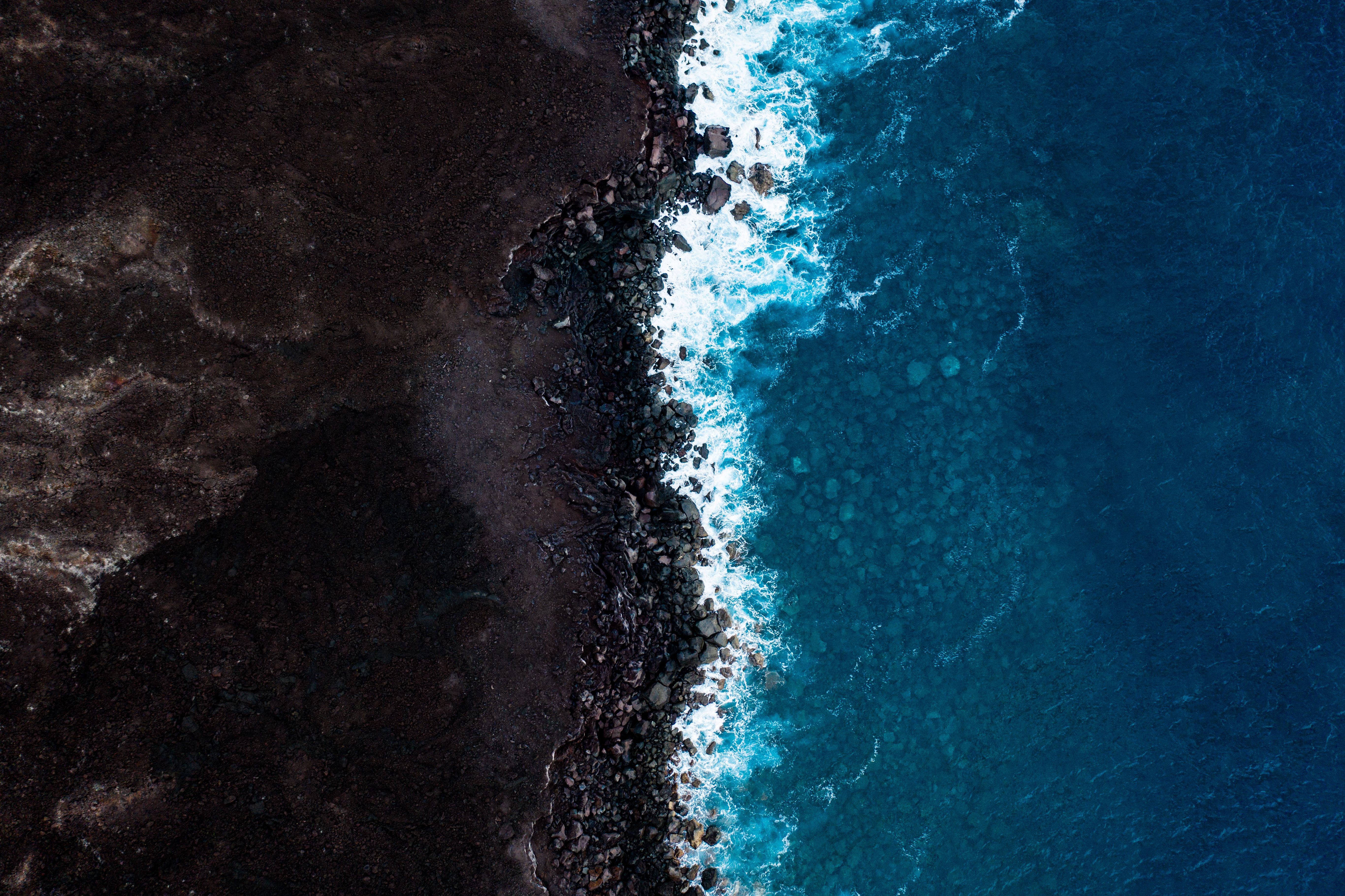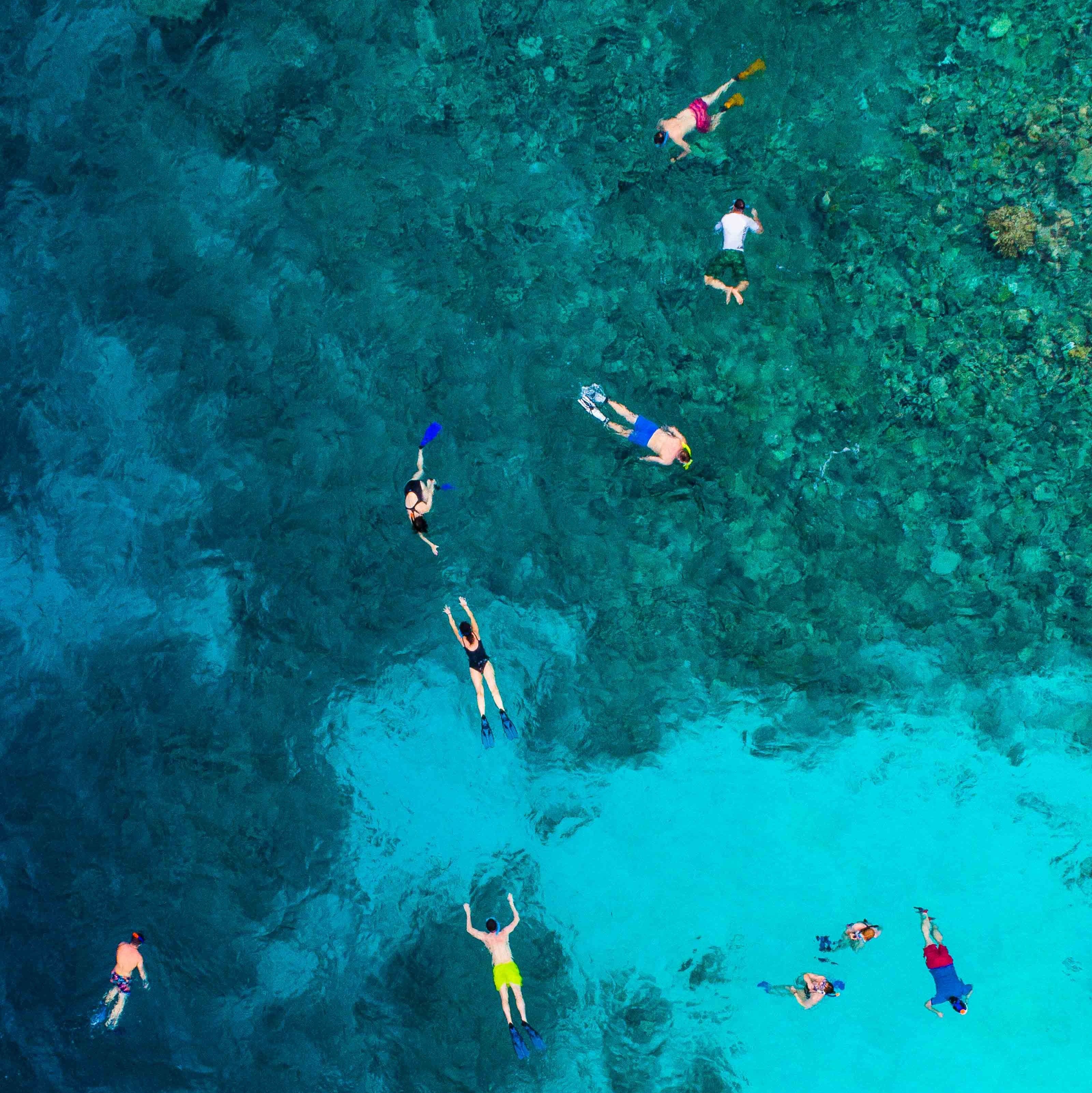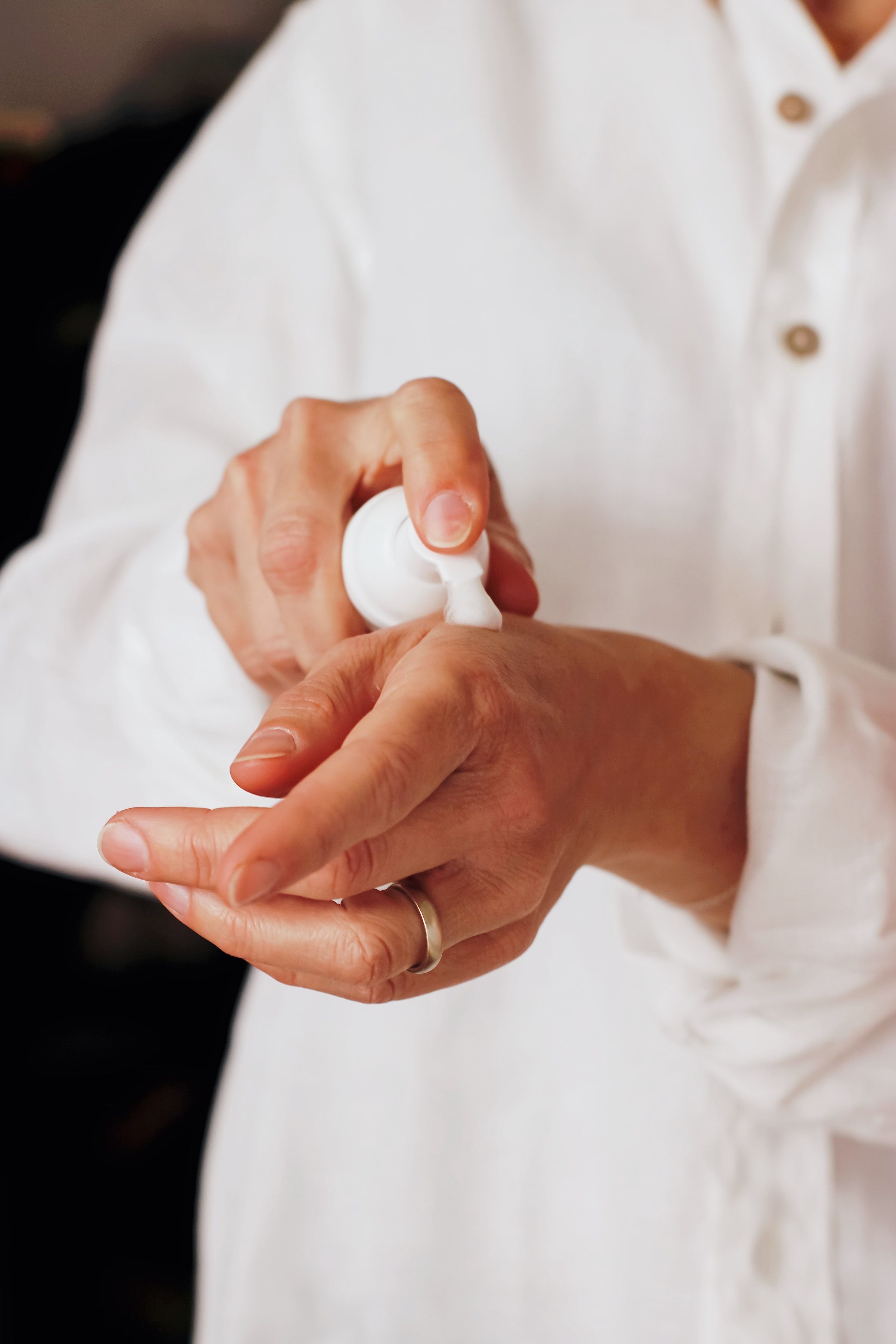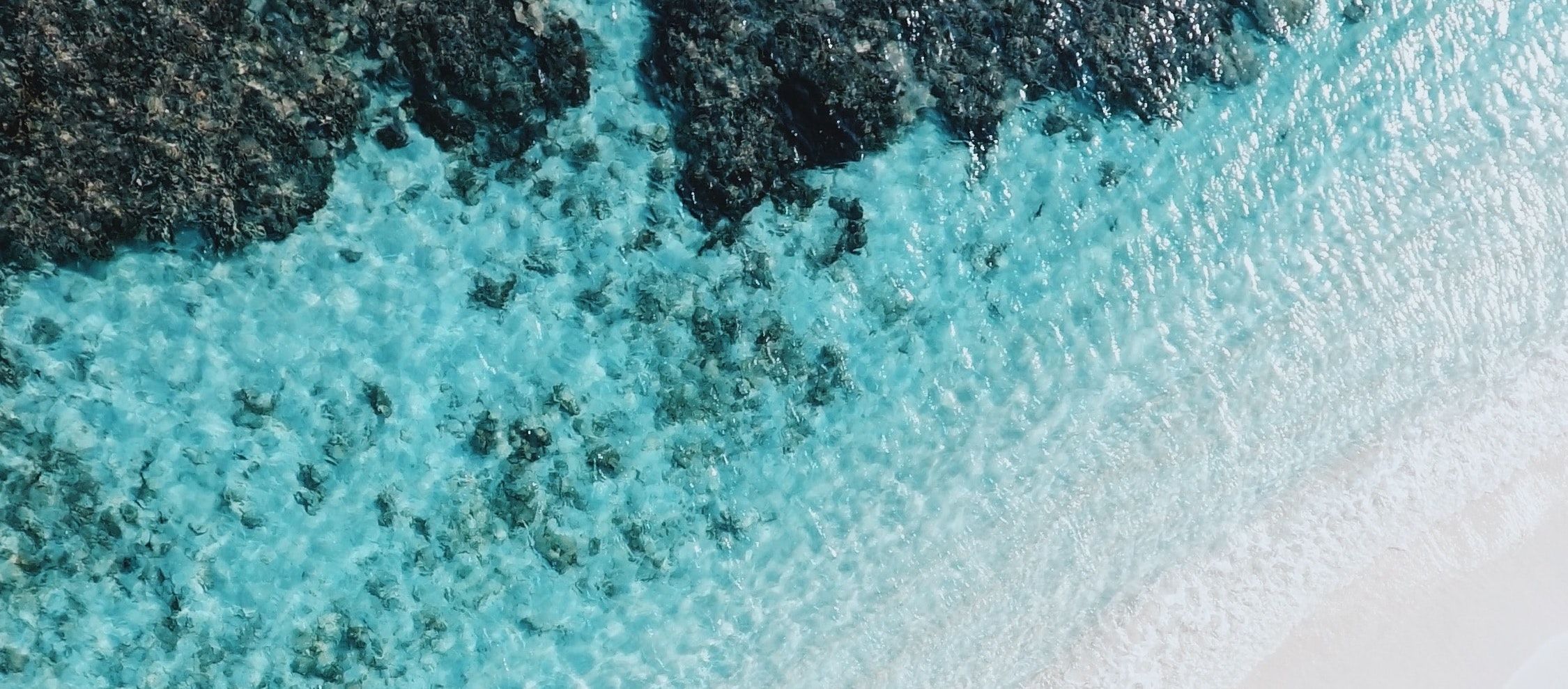
Ways To Reduce Your Carbon Footprint With SPF
Decoding SPF and your carbon footprint. How to make more discerning choices with mineral sunscreens that not only safeguard your skin but are sustainably savvy.
By SunsolveMD Team | 10 Min. Read
February 5, 2023Decoding the SPF market is integral to our mission at Sunsolve MD. Choosing the most efficacious formulas that offer UV and broad-spectrum protection, and wearing them 365 days a year, is a dermal health non-negotiable. But evidence is demonstrating that some SPF formulas are having a detrimental effect on the planet. So how do you stay sun safe, but live sustainably with a healthy climate conscience? Let’s navigate the complex landscape of SPF and sustainability together.

How does chemical (organic) SPF negatively impact the environment?
Research by the FDA has revealed that chemical sunscreens, particularly those including the specific filters oxybenzone, homosalate and otocrylene cause environmental and biological issues (Matta, Murali K; Florian, Jama, 2022).
To succinctly break this down, according to the American Academy of Dermatology approximately 14,000 tons of sunscreen ends up in oceans every year. There is growing scientific evidence that the presence of chemical (organic) UV filters in the marine environment released during recreational activities such as swimming can adversely impact ecologically important coral communities.
Coral reefs are highly productive and economically vital ecosystems that provide myriad ecosystem functions and biodiversity. Oxybenzone has been implicated specifically in laboratories as a possible contributor to coral reef bleaching. Oxybenzone, octocrylene and octinoxate have also been identified in various species of fish worldwide. This has possible future consequences in the food chain.
What sunscreens specifically pose a threat to marine life?
In 2021, The National Oceanic and Atmospheric Administration identified ten sunscreen ingredients as being toxic to coral and marine life. Eight of these are chemical (organic) filters while two are mineral (inorganic). These are:
Organic filters
- Oxybenzone
- Benzonphenone-1
- Benzophenone-8
- PABA (Padimate O)
- 4- Methylbenzylidene camphor
- 3- Benzylidene camphor
- Octinoxate
- Octocrylene
Inorganic Filters
- Nano titanium dioxide
- Nano zinc oxide
What global locations have banned the use of chemical sunscreen filters?
There is currently a ban in the following five locations on the use of two organic SPF’s. These are oxybenzone (benzophenone-3) and octinoxate (ethylhexyl methoxycinnamate) or EHMC.
- Hawaii
- Key West, Florida
- Palau (an island in the western Pacific)
- US Virgin Islands
- Bonaire (the Caribbean Netherlands)
How do chemical UV filters damage marine life?
Exposure to sunscreen chemicals can have varied and wide ranging detrimental effects on marine life. Here’s a few of the key members of the aquatic ecosystem and how they are adversely affected:
Green algae
Can impair growth and photosynthesis
Coral
Can induce coral bleaching, damage coral DNA, deform young coral and even kill healthy coral
Mussels
Can induce defects in the young
Sea Urchins
Can damage immune and reproductive systems and deform their young
Fish
Can decrease fertility and reproduction and cause female characteristics in male fish
Zebra fish
Can alter brain and liver development
Dolphins
Can accumulate in tissues and be transferred to their young
What evidence is there to support this?
In a review looking at 32 studies published up to June 2020, 14 different organic (chemical) UV filters were detected in sea or ocean water near coral reefs. These read in the nanograms per liter range. For context, a nanogram is one billionth of a gram. In addition to this, three studies of oxybenzone and octinoxate exposure demonstrated key data points that risk was present to coral reef health.
On 9th February 2021, The National Academies of Sciences, Engineering and Medicine formed a committee sponsored by The Environmental Protection Agency to study the environmental and health impact of sunscreens.
The findings of this study were released in August 2022. Although it’s important to note that this was a study, not a full ecological risk-assessment, it revealed some key points that should inform vital future action. Some of the most notable include:
Five chemical SPF filters are found to be non-biodegradable in wastewater. These are:
- avobenzone
- dioxybenzone
- octocrylene
- ensulizone
- ecamsule
Octocrylene and Octinoxate exhibit the maximum recorded sediment concentration values. These are between 0.1 and 2.4μ/g. Again for scale, 1μ/g represents one microgram which equates to one millionth of a gram. All other UV filters show maximum recorded concentrations in sediment at below 0.1μ/g.
The highest concentrations of UV filters found in ocean and sea water tend to be in shallow water near beaches. Concentrations decrease with the distance from shoreline and water depth.
Several chemical and one mineral SPF compound display low to moderate levels of bioaccumulation (i.e. a chemical build up in tissues) in a variety of living marine life. This marine life spans algae, zooplankton, sea grass, corals and fish.
These include:
- Avobenzone
- Octocrylene
- Octinoxate
- Homosalate
- Padimate O (PABA derivative)
- Titanium Dioxide
Oxybenzone, dioxybenzone and TiO2 (titanium dioxide when in the presence of UV radiation only) all exhibit acute levels of toxicity in algae, fish and marine invertebrates.
Elevated temperature levels can exacerbate the toxicity of a chemical SPF compound.
Climate change, pollution, overfishing and habitat destruction in addition to sunscreen pollution, all contribute to impaired health in marine life and aquatic ecosystems.
Information from this report is currently with the Environmental Protection Agency. The strong and urgent recommendation is for the EPA to carry out a formal risk assessment into the impact of all UV filters on marine life.
How does SPF enter aquatic environments?
Chemical and mineral SPF UV filters permeate global oceans and seas in three predominant ways:

1/ Via recreational activities
All sunscreens rinse off directly into the ocean when people swim, or enjoy watersports at the beach. Rinse-off rates vary depending on formula and the amount of product that is left on skin on contact with water.
2/ Via waste water
Excess ground water and overflow from septic tanks, cesspools, sewage and waste water plants will eventually flow into major waterways. These will contain traces of SPF from regular household showering or bathing.
3/ Via storm water
Surplus water from flash floods and stormy weather conditions will stream into the aquatic systems of both fresh waterways including rivers, lakes and reservoirs and the coral, coastal and offshore environments of marine life.
What happens to mineral (inorganic) sunscreens when they are in our marine and fresh waterways?
Mineral SPF’s tend to aggregate and settle into sediment. Zinc oxide (ZnO) is much more likely to dissolve into ions than it’s mineral SPF counterpart, titanium dioxide (TiO2). However, this is dependent on soil conditions like pH, solids, other ions and the conditions of the surrounding water. Mineral SPF filters vary in how they accumulate and settle into water or not depending on the coatings used in their particular SPF formula.
What’s notable to point out is that despite their small size, nano zinc oxide particles tend to clump together, create a film and become deposited in aquatic sediment. Also dissolved nano zinc oxide particles can also react with other chemicals in the water to escalate levels of toxicity.
Marine safe solution
Always select a non-nano zinc oxide based mineral SPF formula. Sunsolve MD has some of the most sophisticated, second-skin formulas on the market. Make them a go-to in your search for a reliable non-nano sustainable SPF. And apply liberally, daily.
How do chemical (organic) SPF’s behave in waterways?
Solubility is a huge determining factor in predicting how organic sunscreen filters will react in an aquatic environment. More soluble compounds will essentially seek out the water to survive. Less water-soluble chemical SPF filters will attach themselves to something else. Some are lipophilic so they thrive being connected to any fat in the water.
Most chemical UV filters tend to be hydrophobic. This means they are not capable of uniting with or absorbing water. Hydrophobic chemical SPF’s will attach to particles or sediment in the water. Exceptions to this are aminobenzoic acid, ensulizone, trolamine salicylate and sulisobenzone.
Oxybenzone, octocrylene, homosalate, avobenzone and octinoxate demonstrate the highest measured concentrations in water of all the organic UV (chemical) filters. These levels are typically in the range of 1-10 1μg/litre. Recorded levels for all other organic sunscreen filters are below 1μg/litre.
What are the environmental concerns around zinc oxide nano particles?
A study from the University of California Davis’ Marine Laboratory shows that exposure of ZnO (zinc oxide) nano particles even in low concentrations generates highly abnormal developmental patterns for aquatic life. So despite their mineral formula and blanket term reputation as ‘reef safe’ or ‘reef friendly’ a more recent clutch of in-vitro (in the laboratory) and in-vivo (in the natural environment) studies have demonstrated that in reality zinc oxide nano particles could be just as toxic to marine ecosystems as their chemical SPF adversaries.
Why is a non-nano zinc oxide SPF more reef safe?
Essentially, nano zinc oxide and nano titanium dioxide particles are so small they can be absorbed into the tissues of marine life. Nano particles are below 100 nm in diameter. Again for reference, nm or a nanometer equates to one billionth of a meter.
Micro-sized, non-nano zinc oxide sunscreen particles are ten times this size. They are measured in μm; or micrometers which equal one millionth of a meter. Most micro-sized non-nano zinc oxide particles are 0.1 to 10.0 μm.
A non-nano zinc oxide formulation is a much more sustainable SPF. Its larger particle size means it won’t enter the tissue of coral, fish or algae. So if you’re looking to answer the question “what SPF is reef safe?” The answer truly is a non-nano zinc oxide mineral formula. It’s the ultimate sustainable and coral safe SPF choice out there. It’s worth noting here too that non-nano sized particles are also safer for your body. Recent studies have demonstrated that nano zinc oxide particles have a tendency to aggregate in human tissues. This implicates them to a high toxicity rate in the body.
Topical Solution:
All Sunsolve MD’s mineral SPF formulas utilize a brand new, environmentally compatible non-nano zinc oxide. Harnessing the expert knowledge of one the most progressive scientists in the world, Dr Harry Sarkas, the pioneering zinc oxide base sets a new benchmark in safety and SPF sustainability. Dr Sarkas has reconfigured the crystal formation of zinc oxide and placed it in a sophisticated formula that offers controlled micro-sized particle distribution.
Sunsolve MD’s patented non-nano zinc oxide particles are specifically engineered to deliver the most lightweight configuration of micro-sized zinc oxide seen in a mineral SPF formula. This means zero ‘white cast’ and a beautiful, super sheer finish on skin of any color.
How do I reduce my carbon footprint in my sunscreen choices?
1/ Label scout for the following ingredients and avoid any formula containing them. Don’t be fooled by blanket ‘reef-safe’ or ‘reef friendly’ labels as these terms are unregulated.
- Oxybenzone
- Benzophenone-1
- Benzophenone-8
- PABA (padimate O)
- 4 Methylbenzylidene camphor
- 3 Benzylidene camphor
- Octinoxate
- Octocrylene
2/ Opt for gel or cream textures, don’t buy aerosols. Sprays create a film that can settle on the sand and these can be washed into the ocean as the tide changes.
3/ Always use a mineral formula that contains non-nano zinc oxide or titanium dioxide. Non-nano particles are larger than 100 nanometers (nm) in size. This larger size means that non-nano mineral SPF sunscreens are less likely to be absorbed by marine life.
4/ Look for products containing recycled materials and eliminate single use plastic as much as possible in the brands you buy into. Go for carbon neutral or even carbon zero packaging and FSC certified recycled cardboard on the labels and brand information.
What is Sunsolve MD doing to commit to a more sustainable SPF future?
Not only is Sunsolve MD fully and passionately committed to producing the finest environmental SPF formulas. We are also producing SPF with a lower carbon footprint. How?
Firstly, we use a water free zinc oxide process and all our zinc is 100% up-cycled. This significantly lowers our Co2 emissions used in the meticulous manufacturing process of our non-nano zinc oxide SPF’s.
When it comes to packaging, the SunsolveMD Free Recycling Program gives all our empties a second life through a partnership with TerraCycle. We also have five sustainability accreditations. We are carbon neutral and FSC certified, EWG verified and a proud member of the Provenance sustainability platform and Coral Alliance.
References
US Department of Commerce NO and AA. Sunscreen chemicals and marine life [Internet]. [cited 2021 Mar 27]. Available from: https://oceanservice.noaa.gov/news/sunscreen-corals.html.
Mancuso JB, Maruthi R, Wang SQ, Lim HW. Sunscreens: an update. Am J Clin Dermatol. 2017;18:643–650. doi: 10.1007/s40257-017-0290-0
Fivenson D, Sabzevari N, Qiblawi S, Blitz J, Norton BB, Norton SA. Sunscreens: UV filters to protect us: Part 2—increasing awareness of UV filters and their potential toxicities to us and our environment. Int J Womens Dermatol. 2021;7:45–69.
Tsatalis J, Burroway B, Bray F. Evaluation of “reef safe” sunscreens: labeling and cost implications for consumers. J Am Acad Dermatol (Elsevier) 2020;82:1015–1017. doi: 10.1016/j.jaad.2019.11.001.
Mitchelmore CL, Burns EE, Conway A, Heyes A, Davies IA. A critical review of organic ultraviolet filter exposure, hazard, and risk to corals. Environ Toxicol Chem. 2021;40:967–988. doi: 10.1002/etc.4948.
Abbasi J. FDA trials find sunscreen ingredients in blood, but risk is uncertain. JAMA. 2020;323:1431–1432.
Tsatalis J, Burroway B, Bray F. Evaluation of “reef safe” sunscreens: labeling and cost implications for consumers. J Am Acad Dermatol (Elsevier) 2020;82:1015–1017.
Sabzevari N, Qiblawi S, Norton SA, Fivenson D. Sunscreens: UV filters to protect us: Part 1: changing regulations and choices for optimal sun protection. Int J Womens Dermatol. 2021;7:28–44.
Kim S, Choi K. 2014. Occurrences, toxicities, and ecological risks of benzophenone‐3, a common component of organic sunscreen products: A mini‐review. Environ Int 70:143–157.
LEARN
You Might Also Like
Psoriasis & SPF: The Do's & Don'ts
Psoriasis is a chronic skin condition causing red, scaly, and often itchy patches. Find more about choosing the sunscreen formula that provides maximum protection and soothes the skin.
By SunsolveMD Team | 8 Min. Read
January 20, 2023Rosacea & SPF: How To Choose The Right Sunscreen
Rosacea is a common skin condition characterized by facial redness and inflammation. Follow this guide to choose the right sunscreen if you have rosacea.
By SunsolveMD Team | 8 Min. Read
January 20, 2023The Eco-Conscious SPF Lover’s Guide to Reef Safety
How to choose the right SPF to protect your skin as well as coral and marine life.
By SunsolveMD Team | 8 Min. Read
January 20, 2023


